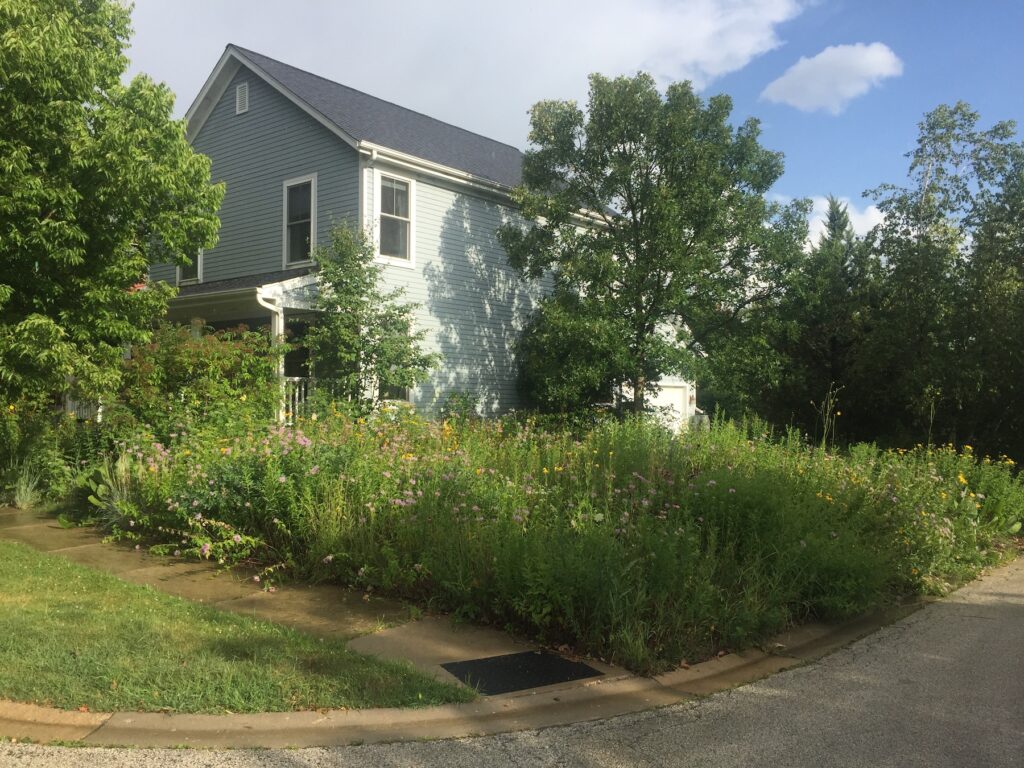One of the ways we can live out a whole Christian faith-life, whether as families or as communities of faith, is to restore and maintain natural habitat on our own properties.
Whether or not we do so matters.
Without natural habitat – without food to eat and places to find shelter – much of the wildlife of God’s earth cannot survive.
Restoring habitat usually and primarily means replacing lawn with vegetation that is native to your particular place. But if your property already has areas that you do not keep as lawn or garden, then restoring habitat can also involve removing invasive plant species and, again, planting more native plant species.
To inspire you, I want to share the video below of a presentation by Stephen Barten entitled “Backyard Wildlife: If you Build It, They Will Come.” He gave this presentation for the non-profit group Chicago Living Corridors through the Barrington Library in October.
Stephen, a veterinarian and award-winning wildlife photographer, has been restoring his family’s property in the Barrington area for the last 25 years. In the ~75-minute presentation, he shares photos and trailcam footage of 70 species of mammals, insects, reptiles, amphibians, and birds that have been seen on their property.
If you’re like me, you’ll be gobsmacked by the sheer variety of creatures Stephen documents.
That experience of sharing their world with a wide vairety of creatures is something Jesus and the other people of the Bible would have understood. From bears and jackals to the white stork and partridge, the Bible is full of many references to wildlife in the air, on the land, and in the sea. We need to visualize the many shepherds in the Bible interacting with livestock, wildlife, and complex vegetation ecologies all of the time. We know, too, that King Solomon paid a great deal of attention to plants and wildlife as well. I suspect Solomon and Stephen would have a great time discussing their observations together, despite being native to two very different places.
You will also appreciate the insights Stephen provides about a number of the different species of wildlife he encounters. He even shares tips about living with some of that wildlife, like what to do if you find a fawn.
Stephen and his family do benefit from living within two blocks of a lake and from living in a wooded area with few homes. If you are living in a dense city area or subdivision, you will likely not be able to attract flying squirrels and mink no matter how much habitat you restore. But you will still see God’s creatures and help sustain them.
Now is the time to plan for what you will do with your personal property or church’s property in 2022.
Study the habitats of your area. Figure out where you will source native plants for planting in the spring. Get help from someone who knows those plants in designing your habitat. Remove and treat invasive woody brush (like Stephen describes in his presentation). Start small to get the knack of it all. Plan to plant some native plants (even just a few oak trees) in the spring. Get ready by spring.
There are a wide variety of resources available for learning about native plants and restoring habitat to your property. The organization Wild Ones is a good place to start. I would also highly recommend Doug Tallamy’s book Bringing Nature Home. (And if you don’t have your own property, volunteer to help create and restore habitat at your church or another place.)
Will your property look a little different from your neighbors?
It may.
But work to retrain your eyes and cultural assumptions to be in line with God’s perspective. Ask yourself this question – what kind of culture and values does a yard (or a church landscape) really communicate when the plants there almost completely deprive the life of God’s earth life itself?
A well-designed yard that includes habitat and a bit of well-placed lawn, on the other hand, communicates something very different. That yard communicates that the people of that place care about God, the life of God’s world, and their human neighbors, too.
Enjoy. Learn. Grow. Embrace challenge. Show your love of God. Create habitat.
P.S. My wife and I have devoted much of our small property in Grayslake, Illinois, to native plants and maintain the prairie sections with occasional prescribed burns. We’ve been delighted to see cedar waxwings, cardinals, squirrels, chipmunks, voles, chickadees, goldfinches, toads, a variety of bees, monarch butterflies, hummingbirds, house wrens, rabbits, Cooper’s hawk, and a red-tailed hawk eating a rabbit. And, honestly, we’re still learning as we go.

Here is an image of the habitat around our small home just after a late summer rain. Native shrubs and trees are great additions to your home landscape. This section of our yard includes native trees like hackberry and bur oak. There are also native shrubs like elderberry, serviceberry, nannyberry, and witherod viburnum. A native habitat landscape in Arizona would, for example, look very different. Please share images of the habitat you create on your property with me at wholefaithlivingearth@gmail.com.




